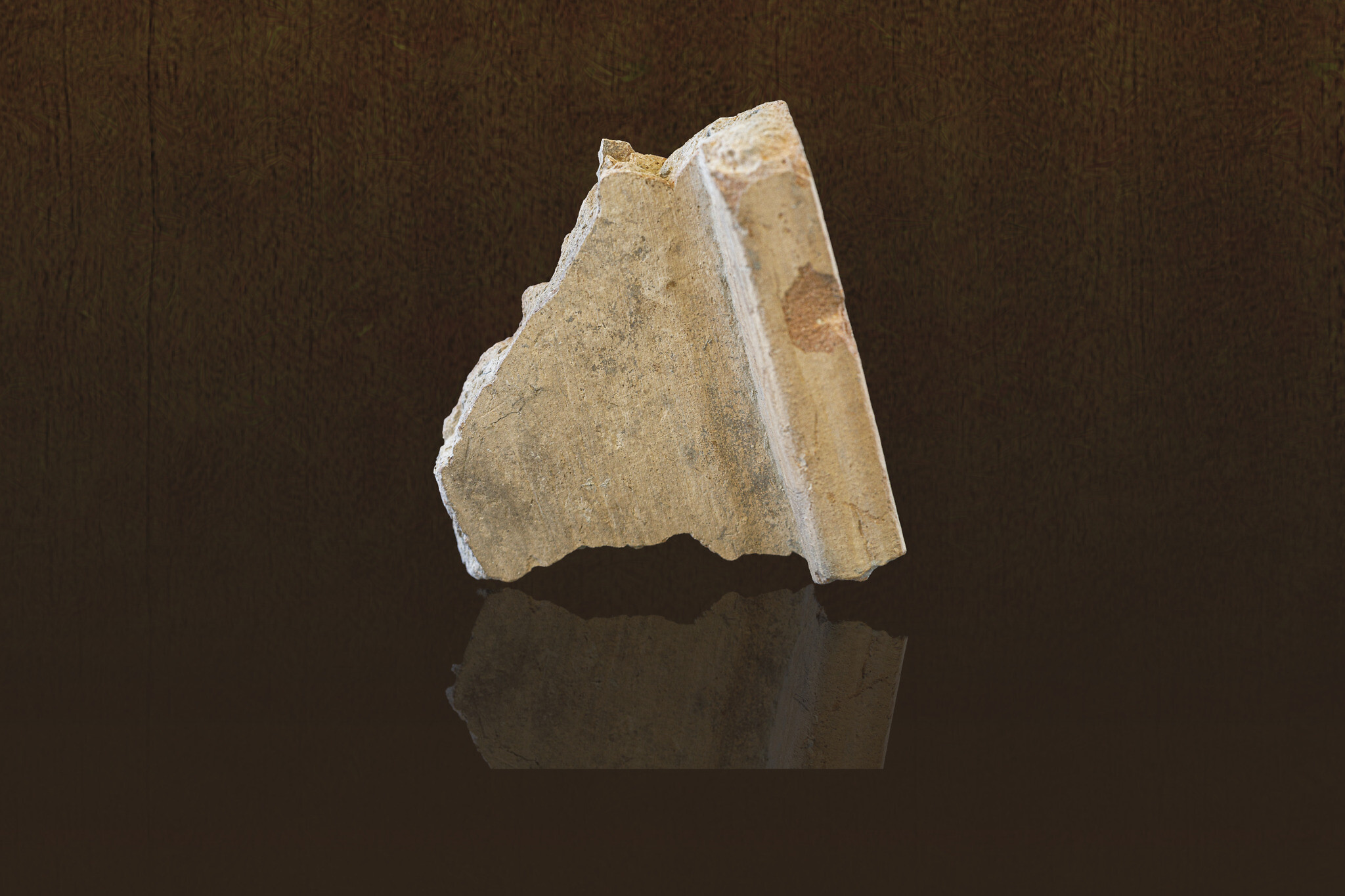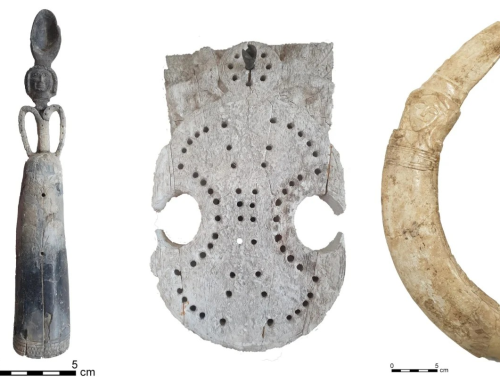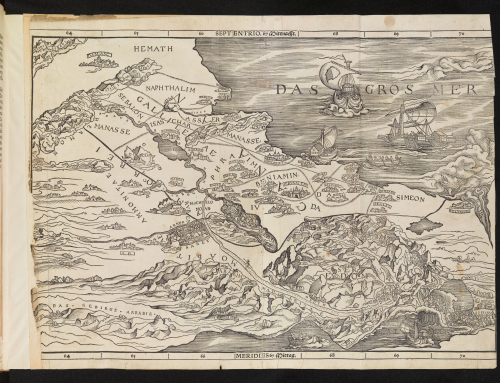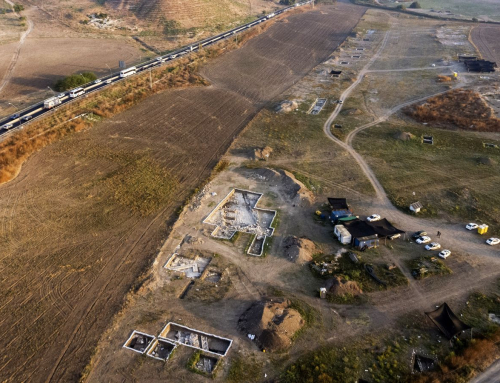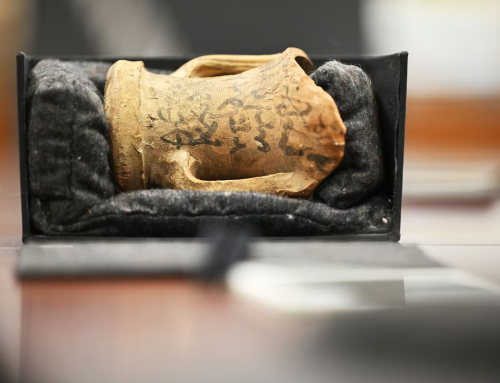Sixteen recently discovered ceramic roof tile fragments are providing new insight into how Antiochus IV Epiphanes — the famous villain of the Hanukkah story — didn’t just bring his armies to Jerusalem, but Greek culture, too.
The shards, which date back to the second century BCE, were uncovered in the City of David National Park surrounding the Old City of Jerusalem, and represent the earliest known evidence of ceramic roof tiles being put to use in the Land of Israel.
Discovered in archaeological excavations at the Givati Parking Lot conducted by Dr. Yiftah Shalev and Dr. Filip Vukosavović from the Israel Antiquities Authority, and Prof. Yuval Gadot from Tel Aviv University, and funded by the City of David Foundation, the tile fragments will be exhibited for the first time on December 11 at an Israel Antiquities Authority conference titled “In Those Days At This Time — The Hasmoneans are Coming.”
“Until now, we had little material evidence for the presence of the Seleucid Greeks in Jerusalem,” said Vukosavović. “The new tiles discovered in the City of David provide tangible remains of the Seleucid Greek presence in the region, linking us with the story of Hanukkah.
“It’s very exciting to encounter the Seleucid ruler Antiochus IV ‘face-to-face’ almost 2,200 years after the events of Hanukkah,” he said.
Ceramic roofing tiles were invented in Greece and may have been in use as early as the 7th century BCE, and their durability and water resistance caused them to rapidly catch on in nearby areas. But, in a phenomenon perhaps familiar to modern-day Israelis, the product wouldn’t be found in the Land of Israel for roughly another 500 years.
In fact, it was representatives of the Seleucid king Antiochus IV, who reigned over vast areas from Syria to Persia, who brought the knowledge and tradition of constructing tiled roofs from Seleucid-controlled Syria, said the researchers.
“The climate and the relatively low precipitation in Israel, as well as other factors, do not justify the use of tiles for roofing, yet Antiochus still chose to make use of these roof tiles, probably for cultural reasons and to make a statement by introducing Greek monumental material culture in the country at a short distance from the Jewish Temple,” said Vukosavović.
According to the Book of Maccabees, in 168 BCE Antiochus IV sent his soldiers to Jerusalem, where they desecrated the Temple and tried to eradicate Judaism, prohibiting the observance of Shabbat and festivals as well as the practice of circumcision. This led to the Maccabean Revolt and the retaking of the Temple, which is celebrated today with the holiday of Hanukkah.
But even after the cleansing of the Temple, the conflict between the Maccabees, the Hellenized Jews and the Seleucids would continue for another 30 years before the Maccabees achieved independence.
To shore up control of Jerusalem, Antiochus IV constructed a mighty fortress known as the Acra. While the Acra had an enormous impact on the residents of Jerusalem for decades — and despite numerous descriptions of it in Jewish and external literary sources — the precise location of the fortress has been lost to time and has become the subject of scholarly debate.
“The architectural remains uncovered over recent years have reopened the debate, and they actually strengthen the identification of the fortress on the City of David hill,” said Dr. Ayala Zilberstein of the Israel Antiquities Authority and Tel Aviv University.
“The discovery of the roof tiles constitutes additional evidence and further reinforcement from a different direction for the identification of the Hellenistic presence in the City of David, characterized by foreign construction traditions,” she said. “Tiles were very rare in our region during this period, and they were alien to local construction traditions, indicating that the technique of using tiles to roof parts of a tower or a structure inside that famous fortress was brought from Greek-controlled areas by foreign rulers.”
The researchers behind the excavation expressed wonder at the discovery, which could have an outsized impact — much like the small group of rebels who became known as the Maccabees.
“It is surprising how such a small discovery can open a tiny window into a vast world of research,” they said.
Original Article – Gimme shelter: Ceramic roof tiles cast light on Greek presence in Hanukkah-era Jerusalem | The Times of Israel

